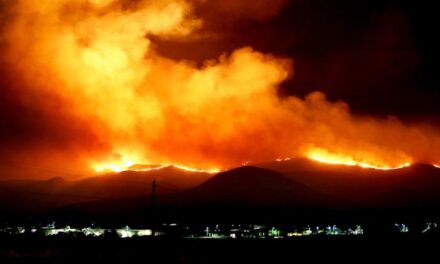
What holds the rainfall for the new season?
The world economic scene remains volatile, for us then the desirability of keeping going amid such a situation relies much on our broad agricultural base which in turn relies on rain. Will this base match our needs, keeping us viable through the season and deep into the new calendar year?
The building blocks of our rainfall season are varied and not always in cohesion. Sorting out the positives from the neutral or negative is required before attempting an assessment of the looming rainfall season.
Our current synopsis, both overhead and further afield, while not totally positive is also not negative.
A safe way of describing current meteoroligal conditions is to say they are neutral. The important question then becomes, which way will conditions oscillate as the season progresses? The neutral stance will not continue.
Climate change keeping surface level anticyclone cores well to the south of the historic track persists; its consistency ensures advection of moist, maritime air into the sub-continent towards the heat-low (regularly found on synoptic charts over the south) which forms daily over the interior due to daytime heat. The very pronounced north-south-north airflow seems set to remain, despite the fact that this is usually a typical late-winter August phenomenon.
Broad core cells between Tristan and St Helena are also persistent in that these cores remain static above the mid-Atlantic maintaining at least the semblance of a col, a zone inviting a trough intrusion.
This regularly happens over the adjacent Atlantic and as such, has a major influence on the general Namibian weather pattern.
Above mid-subcontinent moist air has been identified these past weeks, supported by favourable satellite rainfall estimates. While marking Congo air it also designates the outline of the Inter-Tropical Convergence Zone. Across southern Africa, this is poorly identified: there is an absence of surface/upper air detail. Any attempt at identity is based solely on satellite images. Subsequent interpretation relies on surface detail where available. While these Tropical patterns are to be-expected it is, again, promising to find them in place by late October.
Another valuable source of detail is that of sea surface temperature. Here we must look eastward to both Indian and Pacific Oceans. The surface temperature over about two thirds of the Pacific is slightly above mean indicating the beginning of a weak El Nino, but there are substantial pockets of below-mean temperature.
The resultant synoptic patterns are irregular and depart so far from previous assessments, their value as a predictive tool has diminished until a new “normal” has been established. This may take a few decades.
Of major concern is the presence of the 29oC isotherm. From such warmth, Tropical Revolving Storms, in our context Cyclones, emerge. Usually such storms are guided east of Madagascar pushing into the Col area between one departing anticyclone and a still-distant core to the west. Invasion westward forms a dry air pattern above much of our world.
From now until Christmas, only spasmodic patterns are expected with occasional intrusions south of Etosha only. As the ITCZ influence increases in January, advection of Congo air should recur, invading much of the country. This constitutes a good rainfall distribution and intensity but the overall expectation for the season, i.e. January to March, is of below-normal rainfall.
Late season (April and early May) will depend much on the situation above the equatorial Pacific: is there an oscillation effect? Historically, developing negative oscillations show diminishing rainfall prospects for both March and April.
In general, rainfall expectations are not good. The probability of a poor season is stronger than the probability of above-average rainfall. Given the neutral stance of many indicators, it is only possible to say it will probably be a normal Namibian rainfall year.










































